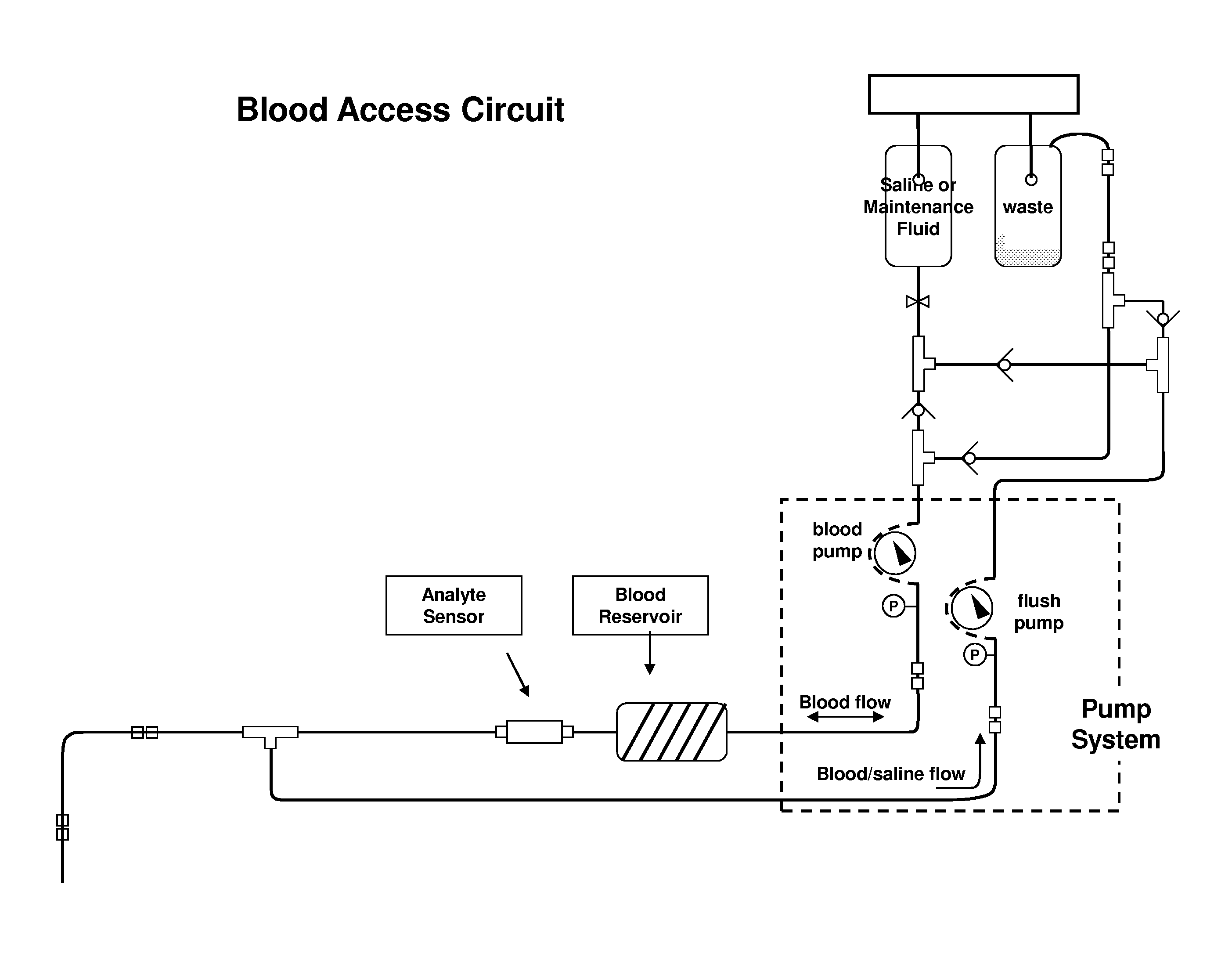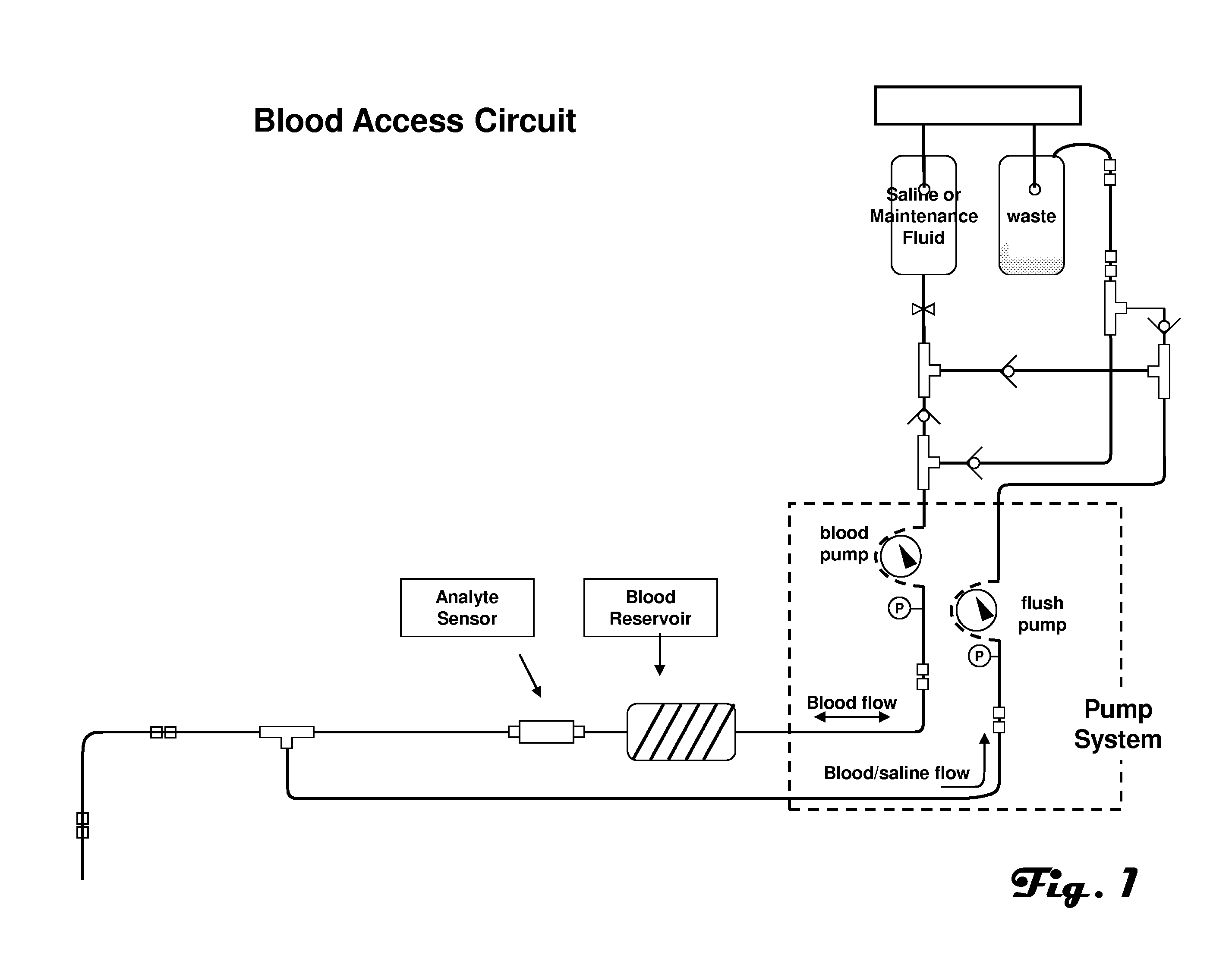Use of multiple calibration solutions with an analyte sensor with use in an automated blood access system
a blood access system and analyte sensor technology, applied in the field of blood analyte measurement, can solve the problems of inability to infuse a significant amount of fluid, inability to accurately measure blood analyte, etc., to achieve linear response, improve accuracy, and improve accuracy
- Summary
- Abstract
- Description
- Claims
- Application Information
AI Technical Summary
Benefits of technology
Problems solved by technology
Method used
Image
Examples
Embodiment Construction
[0030]The present invention is described herein in the context of example blood access and measurement systems, for convenience of description. The present invention can also be used in combination with other blood access systems, such as those described in the applications incorporated by reference above.
[0031]FIG. 1 is an illustration of an example embodiment of a blood access and measurement system suitable for use with the present invention. The example automated blood analyte measurement system contains a sterile fluid solution and a waste bag. The saline or maintenance fluid can contain either zero glucose concentration or a known glucose concentration. Such a system provides the glucose sensor with a known calibration point. In use the sensor can be exposed to this known concentration on a periodic basis.
[0032]FIG. 2 is an illustration of an example embodiment of a blood access and measurement system suitable for use with the present invention. The example automated blood ana...
PUM
 Login to View More
Login to View More Abstract
Description
Claims
Application Information
 Login to View More
Login to View More - R&D
- Intellectual Property
- Life Sciences
- Materials
- Tech Scout
- Unparalleled Data Quality
- Higher Quality Content
- 60% Fewer Hallucinations
Browse by: Latest US Patents, China's latest patents, Technical Efficacy Thesaurus, Application Domain, Technology Topic, Popular Technical Reports.
© 2025 PatSnap. All rights reserved.Legal|Privacy policy|Modern Slavery Act Transparency Statement|Sitemap|About US| Contact US: help@patsnap.com



